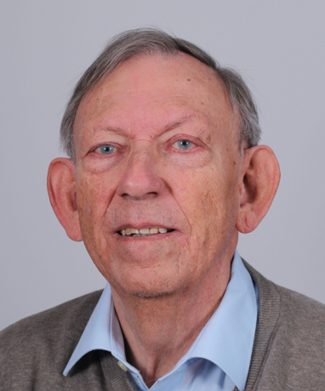Cumulation of Man-Made Radio Noise - A quest for causes of the increase of radio noise in residential areas
Koos Fockens is a PhD student in the department Power Electronics. Promotor is prof.dr.ir. F.B.J. Leferink from the faculty of Electrial Engineering, Mathematics and Computer Science.
 Man-Made Noise and Electromagnetic Interference attracted greater attention for some decades now, especially in circles of radio spectrum users. Increasing levels of noise and interference in residential areas hamper the reception of radio signals over a very broad range of frequencies, from long wave via short wave band up to VHF and even UHF bands. Analog radio as well as modern digital radio systems are affected. Also the upper frequency limit of the interference is moving upwards gradually.
Man-Made Noise and Electromagnetic Interference attracted greater attention for some decades now, especially in circles of radio spectrum users. Increasing levels of noise and interference in residential areas hamper the reception of radio signals over a very broad range of frequencies, from long wave via short wave band up to VHF and even UHF bands. Analog radio as well as modern digital radio systems are affected. Also the upper frequency limit of the interference is moving upwards gradually.
The study in this dissertation limits itself to the frequency range from 500 kHz to 50 MHz, and consists of four main parts. The first part consists of a measurement campaign wherein noise floor levels at the locations of radio users have been established, commissioned by the VERON (Association for Experimental Radio Research in The Netherlands), wherein noise floor levels are determined at 59 locations. It also contains extensively statistical processing, by which regression lines of man-made noise levels are calculated, that can be compared with same regression lines that have been published in the ITU-R P.372-15 recommendation. A significant increase of noise in residential areas has been established. The data processing also indicated that the "critical area", wherein the noise floor is determined by the density of habitation, is limited to a range of 100 to 300 m from the measurement location, depending on frequency.
The second part of the study is about propagation of noise and interference through habituated areas. Another measurement campaign was set up and executed by the author with help from a part of the radio amateurs that participated in the first campaign. Extensive processing of the measurement data resulted in a simple and useful statistical propagation model for residential areas.
In the third part a statistical model for the cumulation of man-made noise is derived, using the propagation model. Using this cumulation model it is possible to calculate expectation values for the noise floor at a certain location, depending on the density of habitation, the density of noise/EMI sources, and the available source power.
In the last part of this study the cumulation model is used for simulations, using several combinations of input variable values. The resulting noise field strength levels are compared with the measured levels. The outcome of these experiments is that the hypothesis, that the injection of disturbances with source powers derived from the generic CISPR limits for the mains port would explain the increase of the man-made noise, is not tenable. Therefore a reasonable conclusion is that the increase of noise levels is caused by radiation from other networks like DC cabling, telecom lines, and/or other wiring.
Especially the higher limit levels for these ports and serious shortcomings in the test methods, not being in accordance with the practical use of the tested equipment, are suspected to cause higher levels of radiation. Another suspected cause for the increased noise levels is formed by limitations in the enforcement of the EMC regulations, whereby too many pieces of illegal equipment circulate on the European market.
At the end this dissitation contains a number of recommendations for further research and proposes a new direction for improving the enforcement of the EU EMC Directive.





